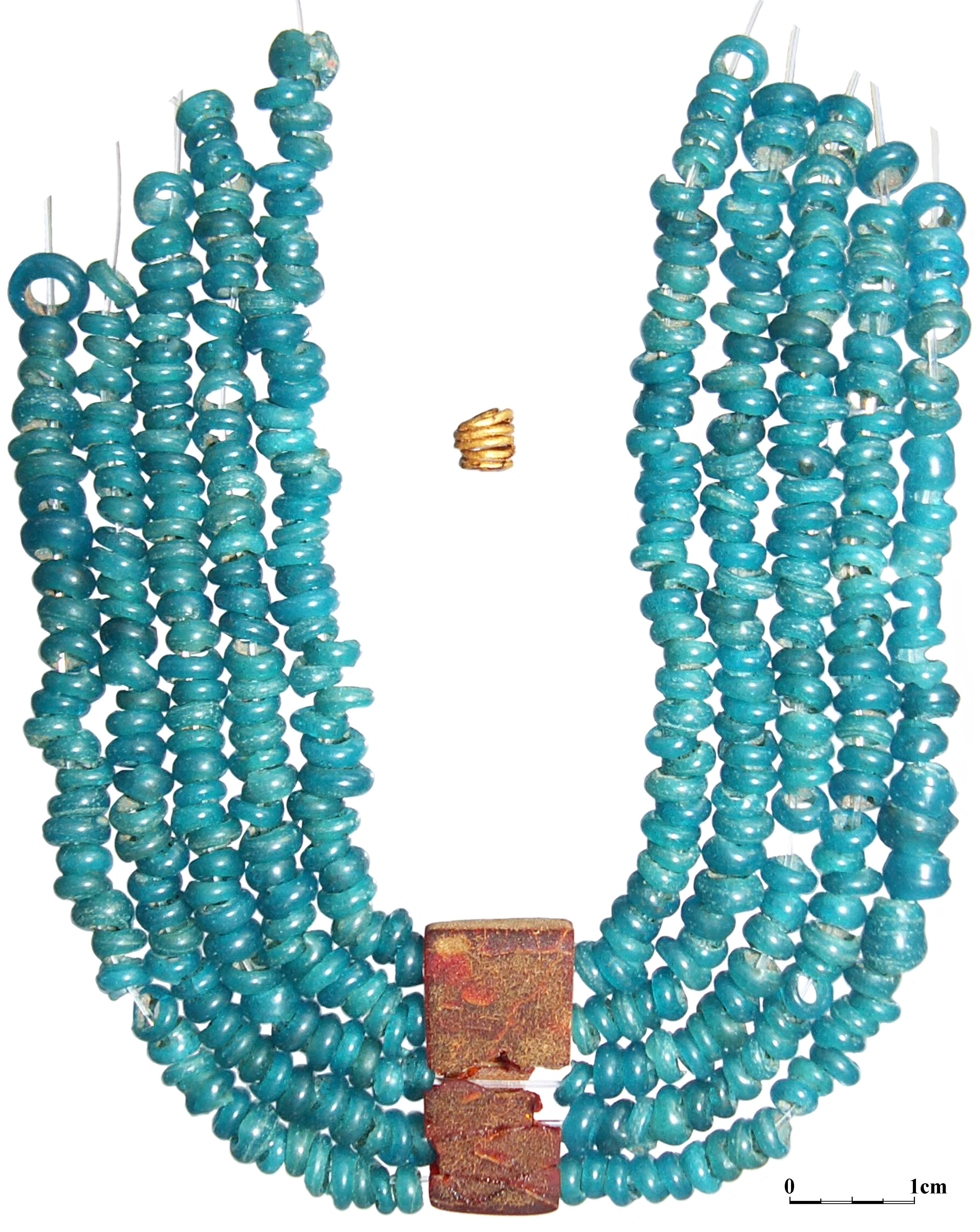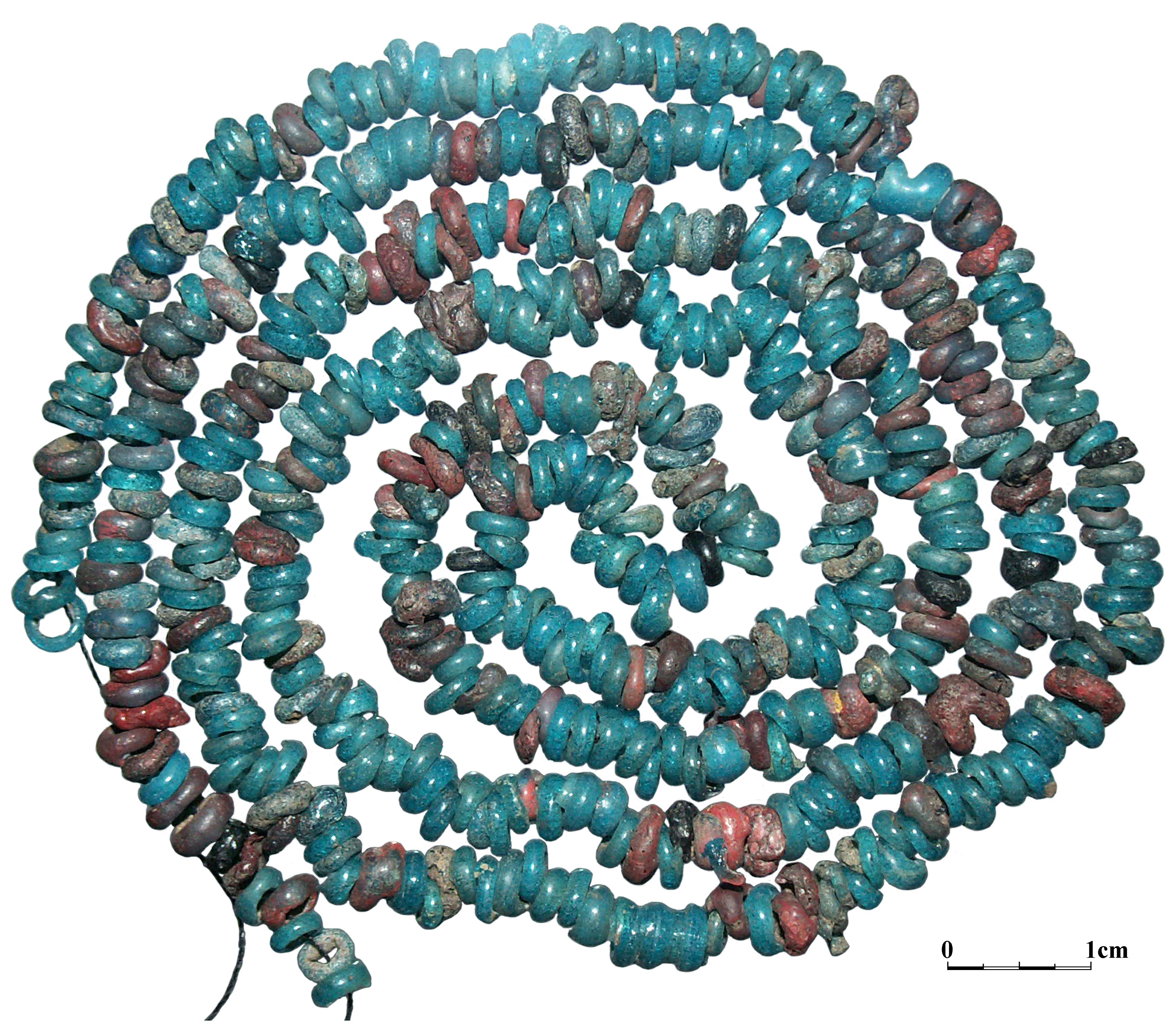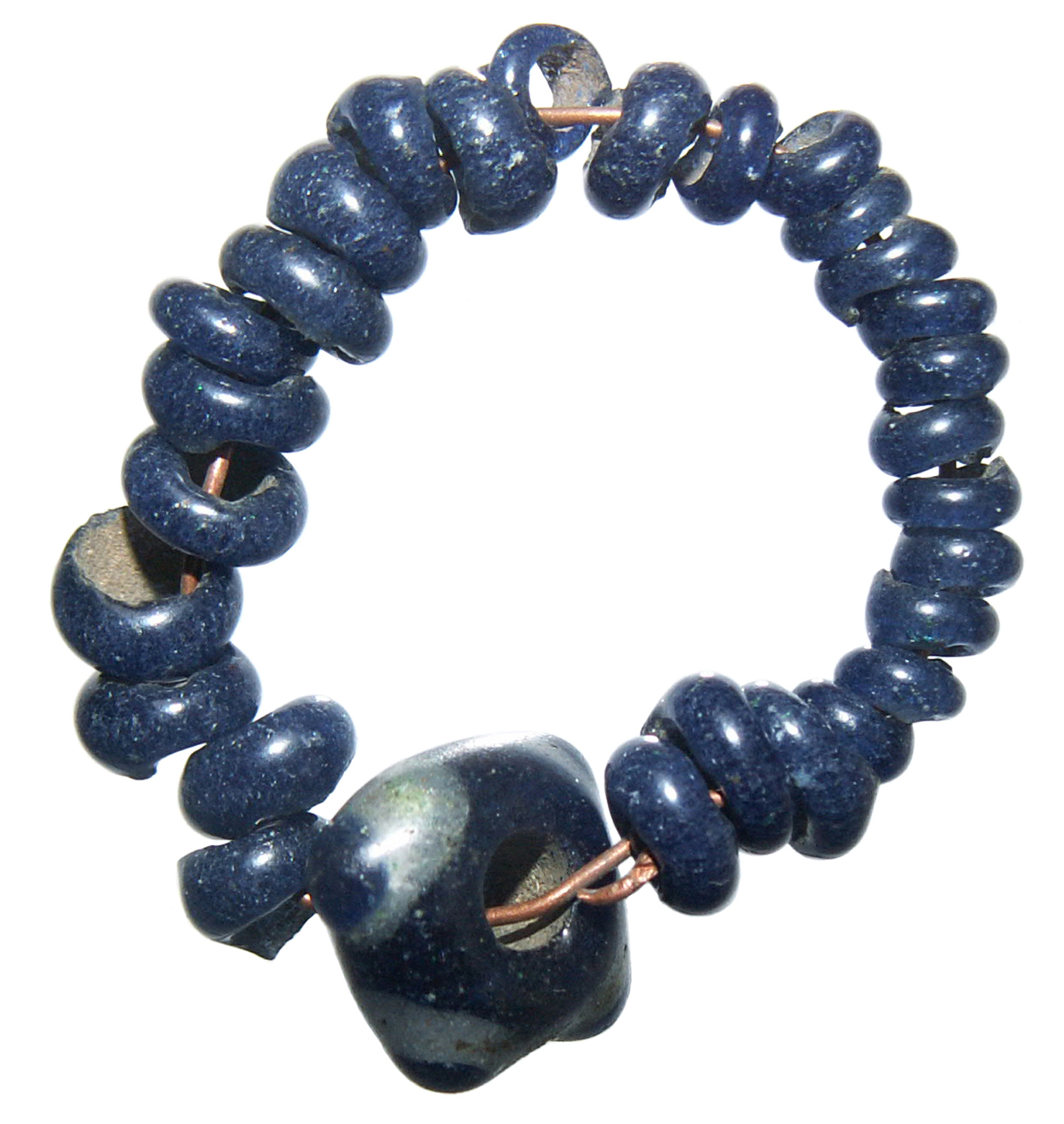The oldest glass jewellery discovered in Poland comes from Egypt and Mesopotamia
Thanks to physicochemical analyses archaeologists have identified the origin of the glass beads and other finds previously excavated during the construction of A4 highway in the Lesser Poland Province.
The oldest glassware that has been found in Poland is over three and a half thousand years old. To identify the origin of the elements of jewellery archaeologists performed chemical composition tests of the glass using two different methods: the EPMA method (Electron Probe Micro Analysis) at the Faculty of Geology of the University of Warsaw and LA-ICP-MS method at the Faculty of Chemistry of the University of Warsaw. The laboratory analyses were carried out thanks to the grant from the Nacional Science Centre.
“Until now, we could only assume where these glass decorations come from. Now, thanks to physicochemical analysis, we are sure. Using only a formal classification of these items, I would not be able to do it – says Tomasz Purowski, PhD from the Institute of Archaeology and Ethnology of the Polish Academy of Sciences.
During the tests, a high contents of sodium, magnesium and potassium oxides were detected, suggesting that the glass beads were melted using ash of plants that typically grow in salt-rich environments such as desert areas and coastlines of Mesopotamia and Egypt.
The examined beads, mostly ring-shaped and made of distinctly transparent glass of a turquoise colour constitute parts of neck ornaments, sometimes multi-element necklaces. One of such examples is a necklace consisting of approximately 380 glass beads, twisted gold wire and an amber spacer bead discovered at Lusatian culture cemetery in Targowisko, Wieliczka district.
Why was glass brought from such distant regions to Central Europe? It’s not an easy question to answer. “We can only speculate that glass was exchanged for other goods, for instance amber. The Bronze Age glasses travelled here along the Amber Road, leading from Italy, through the Moravian Gate, to Poland "- said the archaeologist. According to archaeologists, this exchange took place through middlemen as there is no evidence that Egyptian merchants traded glass goods by the Vistula River.




Source: www.naukawpolsce.pap.pl
Photos: Tomasz Purowski
